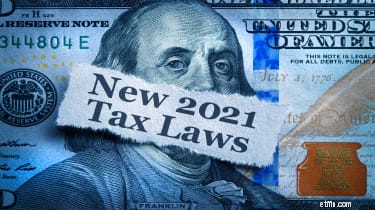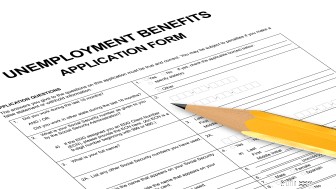
아직 시작하지 않았다면 2021년 세금 보고에 대해 생각할 때입니다. 결국 더 많은 세금 계획을 세울수록 더 많은 돈을 절약할 수 있습니다. 그러나 적절한 세금 계획은 전년도와 비교하여 새로운 사항과 변경된 사항에 대한 이해가 필요하며 2021년 과세 연도에 대한 많은 세법 변경 및 업데이트가 있습니다. 현명한 납세자들이 알아야 할 사항
지난 12월과 3월에 서명된 코로나바이러스 구제 법안에는 2021년 세금 보고에 영향을 미칠 수 있는 여러 조항이 포함되어 있습니다. 다른 2021년 조정은 새로운 규칙 또는 연간 인플레이션 조정의 결과입니다. 그러나 변경 사항이 어떻게, 언제, 왜 이루어졌는지에 관계없이 수익에 해를 끼치거나 도움이 될 수 있으므로 이에 대비해야 합니다. 귀하를 돕기 위해 2021년에 가장 중요한 세법 변경 및 조정 목록을 모았습니다 (일부 관련 항목은 함께 그룹화됩니다). 2021년 보고서를 제출할 4월에 힘들게 번 현금을 더 많이 보유할 수 있도록 지금 이 정보를 사용하십시오.

2021년 자녀 세금 공제에 대한 큰 변화가 있지만 적어도 현재로서는 일시적일 뿐입니다. 2020년 세금 보고의 경우 공제액은 16세 이하 어린이 1인당 $2,000였습니다. 또한 소득이 공동 신고 시 $400,000 이상, 단일 및 가구주 신고 시 $200,000 이상으로 증가하면서 사라지기 시작했습니다. 일부 저소득 납세자의 경우 소득이 $2,500 이상인 경우 공제액이 부분적으로 "환급"(적격 아동당 최대 $1,400)되었습니다. (즉, 공제액이 소득세 부채보다 더 가치가 있는 경우 IRS에서 환급 가능한 금액에 대한 환급 수표를 발행했음을 의미합니다.)
2021년 3월에 제정된 American Rescue Plan은 2021년 과세 연도에 대해 아동 세액 공제를 1년 동안 극적으로 확대합니다. 가장 큰 변화 중 하나는 크레딧 금액입니다. 2021년에는 대부분의 어린이가 2,000달러에서 3,000달러로, 5세 이하 어린이는 3,600달러로 인상됩니다. 그러나 추가 금액($1,000 또는 $1,600)은 소득이 더 높은 가족의 경우 잠재적으로 0으로 줄어들 수 있습니다. 독신으로 세금 보고서를 제출하는 사람들의 경우 조정 총 소득이 $75,000를 초과하면 추가 금액이 단계적으로 중단되기 시작합니다. 단계적 폐지는 가구주 신고자의 경우 112,500달러, 부부 공동 신고인의 경우 150,000달러부터 시작됩니다. 기존의 $200,000/$400,000 단계적 폐지 규정에 따라 크레딧 금액이 더 줄어듭니다.
또 다른 중요한 변경 사항은 2021년 크레딧이 전액 환불된다는 것입니다. 2021년에는 필요한 소득 중 $2,500도 삭제됩니다. 17세 어린이도 2021년 학점을 받을 수 있습니다.
마지막으로 2021년 크레딧 금액의 절반은 7월 15일에 시작하여 12월 15일에 종료되는 월별 지불을 통해 선지급되고 있습니다. 크레딧의 나머지 절반은 2021년 세금 신고서에 청구하게 됩니다. 또한 2021년에 IRS에서 받는 월별 지불액과 2021년 보고서를 제출할 때 실제로 청구할 자격이 있는 자녀 세금 공제액을 조정해야 합니다. 크레딧 금액이 월별 총 지불액을 초과하는 경우 반환 시 초과 크레딧을 청구할 수 있습니다. 그러나 신용 금액이 지불액보다 적은 경우 초과분을 상환해야 할 수도 있고 지불하지 않을 수도 있습니다. 또한 세금 신고서에 전체 공제를 청구하고 싶거나(예:더 많은 환급을 받기 위해) 2021년 공제 자격이 없는 경우(예:전 배우자가 귀하의 자녀에 대한 올해의 학점을 청구할 것입니다). (우리의 2021년 아동 세금 공제 계산기 월 지불액을 포함하여 2021년 크레딧 금액 확인 . )
이러한 개선 사항은 2021년 과세 연도에만 적용되지만 바이든 대통령은 대부분을 2025년까지 연장하고 크레딧을 영구적으로 전액 환불하기를 원합니다. 그러나 그 노력이 궁극적으로 성공할지 여부는 두고 봐야 합니다.
2021년 공제에 대한 자세한 내용은 2021년 자녀 세금 공제:누가 $3,600를 받나요?를 참조하십시오. 월별 지불을 받을 수 있습니까? 기타 자주 묻는 질문

American Rescue Plan은 또한 아동 및 피부양자 돌봄 크레딧을 크게 개선했습니다. 그러나 변경 사항은 2021년 과세 연도에만 적용됩니다(바이든 대통령은 개선 사항을 영구적으로 만들고 싶어하지만).
그에 비해 2020 크레딧은 (1) 돌봄이 제공되었을 때 13세 미만의 피부양자녀, 또는 (2) 자격을 갖춘 장애 피부양자 또는 귀하와 함께 살았던 모든 연령의 배우자에 대한 자녀 및 피부양자 보살핌 비용을 포함합니다. 환불 불가 크레딧은 1명의 아동/장애자에 대한 적격 비용의 최대 $3,000 또는 2명 이상의 경우 $6,000의 20%에서 35%였습니다. 소득이 $15,000를 초과하면 비율이 감소했습니다.
2021년에는 아동 및 피부양자 돌봄 크레딧이 전액 환불됩니다. 최대 크레딧 비율도 35%에서 50%로 점프합니다. 더 많은 케어 비용도 크레딧에 사용할 수 있습니다. 2021년에는 1명의 아동/장애자에 대해 최대 $8,000까지, 1명 이상인 경우 $16,000까지 크레딧이 허용됩니다. 50%의 최대 공제율이 적용되면 2021년 과세 연도의 최고 공제액은 가족 중 자녀/장애가 한 명만 있는 경우 $4,000이고, 자녀가 있는 경우 $8,000입니다.
또한 연간 소득이 $125,000 미만인 가족(연간 $15,000 대신)에 대해 전체 아동 및 피부양자 보호 크레딧이 허용됩니다. 그 후 크레딧이 단계적으로 중단되기 시작합니다. 그러나 소득이 $125,000에서 $438,000 사이인 모든 가족은 최소한 부분 크레딧을 받게 됩니다.
자세한 내용은 2021년 보육 크레딧 확대를 참조하십시오.

세율은 변경되지 않았지만 2021년 소득세 구간은 2020년보다 약간 넓습니다. 차이는 조정을 계산하는 데 사용되는 2019년 9월부터 2020년 8월까지 12개월 동안의 인플레이션 때문입니다.
세율
과세 소득(단일)
과세 소득(결혼 공동 신고)
과세 소득(세대주)
10%
최대 $9,950
최대 $19,900
최대 $14,200
12%
$9,951 ~ $40,525
$19,901 ~ $81,050
$14,201 ~ $54,200
22%
$40,526 ~ $86,375
$81,051 ~ $172,750
$54,201 ~ $86,350
24%
$86,376 ~ $164,925
$172,751 ~ $329,850
$86,351 ~ $164,900
32%
$164,926 ~ $209,425
$329,851 ~ $418,850
$164,901 ~ $209,400
35%
$209,426 ~ $523,600
$418,851 ~ $628,300
$209,401 ~ $523,600
37%
$523,600 이상
$628,300 이상
$523,600 이상
바이든 대통령은 2022년부터 최고 세율을 39.6%로 인상하기를 원하고 있습니다. 이 세율은 독신 납세자의 경우 $452,700, 세대주 신고자의 경우 $481,000, 부부 공동 신고의 경우 $509,300 이상의 과세 소득에 적용됩니다. 2022년 이후에는 평소와 같이 인플레이션에 따라 기준이 조정됩니다.

미국인들은 미국 구조 계획법(American Rescue Plan Act)이 3차 경기 부양책 점검을 승인했다는 소식을 듣고 감격했습니다. 그 수표는 $1,400에 가족의 각 부양 가족에 대해 추가로 $1,400이었습니다. 그러나 일부 사람들은 조정 총소득이 $150,000를 초과하는 공동 신고자, $112,500 이상의 조정 총소득(AGI)이 있는 세대주 신고자 및 독신 신고자에 대한 지급이 단계적으로 중단되었기 때문에 그렇게 많은(또는 아무것도) 받지 못했습니다. AGI가 $75,000 이상인 경우. 사실, AGI가 $160,000(공동 신고자), $120,000(가장) 또는 $80,000(싱글) 이상인 경우 3차 경기 부양 수표는 0으로 줄었습니다. (저희 세 번째 자극 확인 계산기 얼마를 받았어야 했는지 확인 .)
불행히도 3차 경기 부양 수표를 받을 자격이 있는 일부 사람들은 지급금을 받지 못하거나 받아야 할 금액보다 적게 받았습니다. 그러한 사람들의 경우, 복구 리베이트 크레딧으로 알려진 2021년 세금 공제의 형태로 구제를 받을 수 있습니다. 엄밀히 말하면 세 번째 부양 수표는 신용의 선지급이었습니다. 따라서 2021년 보고서를 제출할 때 받은 세 번째 경기 부양 수표(있는 경우)와 청구할 자격이 있는 복구 리베이트 크레딧을 조정해야 합니다. 대부분의 사람들에게 세 번째 경기 부양 수표는 허용된 세액 공제와 동일합니다. 이 경우 크레딧이 0으로 줄어듭니다. 그러나 세 번째 경기 부양 수표가 신용 금액보다 적으면 미납 세금이 차액만큼 감소합니다(환급받을 수도 있음). 그리고 3차 경기 부양 수표가 신용 금액보다 많을 경우 차액을 IRS에 상환할 필요가 없습니다. (또한 경기 부양 수표 지급은 아닙니다. 과세 대상!)
크레딧에 대한 자세한 내용은 복구 리베이트 크레딧이란 무엇입니까?
를 참조하십시오.
2021년에 필요한 최소 분배금(RMD)이 돌아왔습니다. 노인들은 벌금을 내지 않고 2020년에 RMD를 건너뛸 수 있었습니다. 그러나 RMD 정지는 1년 동안만 적용됐다. 따라서 연말까지 72세 이상인 사람은 2021년 RMD를 받아야 합니다.
퇴직 계획 및 IRA에 대한 많은 주요 달러 한도는 2021년에도 동일하게 유지됩니다. 예를 들어 401(k), 403(b) 및 457 계획에 대한 최대 기여 한도는 $19,500로 유지되는 반면 1972년 이전에 태어난 사람들은 다시 $6,500를 넣을 수 있습니다. "추적" 기여로 더 많이. 2021년 SIMPLE IRA 기부 한도는 $13,500로 동일하게 유지되며 50세 이상인 경우 추가 $3,000입니다.
기존 IRA 및 Roth IRA에 대한 2021년 기여 한도는 6,000달러로 유지되며 50세 이상 개인에 대한 추가 캐치업 기여금으로 1,000달러가 추가됩니다. 그러나 Roth IRA 기부에 대한 소득 한도는 높아졌습니다. 기여금은 조정 총소득(AGI)이 부부의 경우 $198,000~$208,000, 독신의 경우 $125,000~$140,000(각각 $196,000~$206,000 및 $124,000~$139)에서 2021년에 단계적으로 중단됩니다.
전통적인 IRA에 대한 공제 단계적 폐지도 2021년에 더 높은 수준에서 시작됩니다. AGI는 부부의 경우 $105,000에서 $125,000, 독신 신고자의 경우 $66,000에서 $76,000(최대 $104,000에서 $124,000 및 $65,000에서 $75)입니다. 배우자 중 한 명만 플랜의 적용을 받는 경우, 미적용 배우자에 대한 기여금 공제를 위한 단계적 제거 영역은 AGI의 $198,000에서 시작하여 $208,000에서 끝납니다(2020년에는 $196,000 및 $206,000).

적격한 자녀가 없는 더 많은 근로자가 2021년 세금 보고 시 근로 소득세 공제(EITC)를 청구할 수 있게 됩니다. "자녀가 없는 EITC" 금액도 더 높을 것입니다. 또한 저소득층 미국인에게도 도움이 되는 다른 변경 사항이 있습니다.
2020년 세금 신고서의 최대 EITC는 소득과 자녀 수에 따라 $538~$6,660입니다. 그러나 신용에 대한 소득 제한이 있습니다. 예를 들어 자녀가 없는 경우 2020년 근로 소득과 AGI 모두 독신의 경우 $15,820, 공동 신고자의 경우 $21,710 미만이어야 합니다. 그러나 세 명 이상의 자녀가 있고 기혼인 경우 2020년 근로 소득과 AGI는 $56,844까지 올라갈 수 있습니다. 적격한 자녀가 없는 경우 EITC를 청구하려면 과세 연도 말에 25세에서 64세 사이여야 합니다.
American Rescue Plan은 자녀가 없는 근로자를 위해 2021년 EITC를 몇 가지 방식으로 확대했습니다. 첫째, 일반적으로 최소 연령을 25세에서 19세로 낮춥니다(일부 풀타임 학생 제외). 또한 최대 연령 제한(65세)이 없어 자녀가 없는 노인도 2021년 크레딧을 청구할 수 있습니다. 무자녀 근로자가 받을 수 있는 최대 공제액도 2021년 과세 연도에 대해 $543에서 $1,502로 증가했습니다. 이전 위탁 청소년 및 노숙자 청소년에 대한 확대된 자격 규정도 적용됩니다.
2020 EITC와 마찬가지로 2021년 소득 대신 2019년 근로 소득을 사용하여 크레딧 금액을 늘릴 수 있습니다.
위에 설명된 개선 사항은 2021 과세 연도에만 적용됩니다. 그러나 2021년에 발효되는 몇 가지 영구적인 EITC 변경 사항도 있습니다. 예를 들어, 자녀가 신원 확인 요건을 충족하지 못해 공제를 청구할 수 없었던 근로자는 이제 무자녀 EITC를 청구할 수 있습니다. 결혼했지만 별거한 일부 부부도 이제 별도 세금 신고서에 EITC를 청구할 수 있습니다. 근로자의 투자 소득 한도도 $3,650(2020년 기준)에서 $10,000(2021년 이후 인플레이션 조정)로 인상됩니다.
또한 Biden 대통령은 자녀가 없는 근로자에 대한 EITC 매개변수의 증가와 연령 적격성 확대를 영구적으로 만들기를 원한다는 점에 유의하십시오. 다시 말하지만 지금은 2021년 과세 연도에만 적용됩니다.

장기 자본 이득(즉, 최소 1년 동안 보유된 자본 자산 매각 이익) 및 적격 배당금에 대한 세율은 2021년에도 변경되지 않았습니다. 그러나 다양한 세율을 충족하기 위한 소득 기준은 인플레이션에 따라 조정되었습니다.
2021년에는 단일 신고 시 과세 소득이 최대 $40,400인 개인 납세자에게 0% 세율이 적용됩니다(2020년에는 $40,000), 가구주 신고자는 $54,100(2020년에는 $53,600), 공동 신고 시에는 $80,800($80,02)
2021년 20% 세율은 독신의 경우 $445,851(2020년의 경우 $441,451), 가장의 경우 $473,751(2020년의 경우 $469,051), 부부 공동 신고의 경우 $501,601($496,601)에서 시작합니다.
15% 세율은 과세 소득이 0%에서 20% 사이인 신고자를 위한 것입니다.
순 투자 소득에 대한 3.8% 부가세는 2021년에도 동일하게 유지됩니다. 수정 AGI가 $200,000 이상인 독신자와 수정 AGI가 $250,000 이상인 공동 신고자에게 적용됩니다.
바이든 대통령은 AGI가 100만 달러 이상인 사람의 소득이 100만 달러(결혼한 사람이 별도 세금 신고서를 제출하는 경우 50만 달러)를 초과하는 범위에서 일반 소득세율로 과세되기를 원하는 사람의 장기 자본 이득을 원한다는 점에 유의하십시오. .
장기 양도소득세율에 대한 자세한 내용은 2021년 대 2020년 양도소득세율은 어떻게 됩니까?
를 참조하십시오.
2021년에는 인플레이션을 고려하여 표준 공제 금액이 인상되었습니다. 기혼 부부는 $25,100(2020년 $24,800)에 65세 이상 배우자당 $1,350(2020년 $1,300)을 받습니다. 싱글은 $12,550 표준 공제(2020년은 $12,400)를 청구할 수 있으며, 65세 이상인 경우 $14,250(2020년은 $14,050)입니다. 가구주 신고자는 표준 공제액으로 $18,800(2020년 $18,650)를 받고 65세가 되면 추가로 $1,700를 받습니다. 시각 장애인은 표준 공제에 $1,350(미혼이고 미혼인 경우 $1,700)을 추가로 가산할 수 있습니다. 생존 배우자).

The American Rescue Plan Act made up to $10,200 of unemployment compensation ($20,400 for married couples filing jointly) exempt from federal income tax for households with an adjusted gross income less than $150,000 (the IRS sent refunds to people who filed their return before the exemption was enacted).
Unfortunately, the exemption only applied to unemployment compensation received in 2020. So, for 2021, Uncle Sam will once again fully tax unemployment compensation as if it were wages.

For the 2020 tax year, a new "above-the-line" deduction was allowed for up to $300 of charitable cash contributions. Only people who claimed the standard deduction on their tax return (rather than claiming itemized deductions on Schedule A) could take this deduction.
The write-off was originally scheduled to expire after 2020, but it was later extended to 2021 – with one important enhancement. For 2020, one deduction was allowed per return, meaning married couples who filed jointly could only deduct $300, not $600. However, for 2021, one deduction is allowed per person, which means married couples can deduct up to $600 on a joint 2021 tax return.
The 2020 suspension of the 60%-of-AGI limit on deductions for cash donations by people who itemize was also extended through the 2021 tax year.

Normally, if a student loan is canceled, forgiven, or otherwise discharged for less than the amount you owe, the amount of canceled debt is considered taxable income. However, starting in 2021, this rule is suspended for most canceled student loan debt that was incurred for a post-secondary education. The change is only temporary, though. In 2026, forgiven student loan debt will once again be taxed.
The rule allowing workers to exclude up to $5,250 of college loans paid by their employer in 2020 from taxable wages was also extended through 2025. The $5,250 cap applies to both student loan repayment benefits and other educational assistance offered by an employer.

For 2021, the adoption credit can be taken on up to $14,440 of qualified expenses ($14,300 for 2020). The full credit is available for a special-needs adoption, even if it costs less. The credit begins to phase out for filers with modified AGIs over $214,520 and disappears at $254,520 ($214,520 and $254,520, respectively, for 2020).
The exclusion for company-paid adoption aid was also increased from $14,300 to $14,440 for 2021.

The lifetime estate and gift tax exemption for 2021 jumped from $11.58 million to $11.7 million — $23.4 million for couples if portability is elected by timely filing IRS Form 706 after the death of the first-to-die spouse. The estate tax rate remains steady at 40%.
The gift tax exclusion remains $15,000 per recipient. So, you can give up to $15,000 ($30,000 if your spouse agrees) to each child, grandchild or any other person in 2021 without having to file a gift tax return or tap your lifetime estate and gift tax exemption.

Unfortunately, the tuition and fees deduction was repealed beginning with the 2021 tax year. That "above-the-line" write-off was worth up to $4,000.
However, to balance out the loss of the tuition and fees deduction, the phase-out thresholds for the lifetime learning credit were permanently increased. For the 2020 tax year, the credit was gradually reduced to zero for joint filers with a modified AGI from $118,000 to $138,000 and single filers with a modified AGI between $59,000 and $69,000. Beginning in 2021, the phase-out range for married couples filing a joint return is $160,000 to $180,000, and it's $80,000 to $90,000 for single filers. (The same phase-out ranges apply to the American Opportunity tax credit.)
The income caps are also higher in 2021 for tax-free EE bonds used for education. The exclusion starts phasing out above $124,800 of modified AGI for couples and $83,200 for others ($123,550 and $82,350 for 2020). It ends at modified AGI of $154,800 and $98,200, respectively ($153,550 and $97,350 for 2020). The savings bonds must be redeemed to help pay for tuition and fees for college, graduate school or vocational school for the taxpayer, spouse or a dependent.

U.S. taxpayers working abroad have a larger income exclusion in 2021. It jumped from $107,600 for 2020 to $108,700 for 2021. (Taxpayers claim the foreign earned income exclusion on Form 2555.)
The standard ceiling on the foreign housing exclusion is also increased from $15,064 to $15,218 for 2021 (although overseas workers in many high-cost locations around the world qualify for a significantly higher exclusion).

The Social Security annual wage base is $142,800 for 2021 (that's a $5,100 hike from 2020). The Social Security tax rate on employers and employees stays at 6.2%. Both workers and employers continue to pay the 1.45% Medicare tax on all compensation in 2021, with no cap. Workers also pay the 0.9% Medicare surtax on 2021 wages and self-employment income over $200,000 for singles and $250,000 for couples. The surtax doesn't hit employers, though.
In August 2020, President Trump issued an executive memorandum allowing employers to suspend the collection and payment of Social Security payroll taxes from September 1 until the end of 2020 for workers making less than $4,000 for any bi-weekly pay period (i.e., $2,000 per week, or $104,000 per year). The president's action didn't eliminate the tax debt — it just delayed withholding and payment of the tax — and it was optional. If your employer suspended payroll taxes in 2020, it must collect the deferred taxes from your paycheck by December 31, 2021. So, during 2021, some workers will have more withheld from their paychecks for the 6.2% Social Security tax.
The nanny tax threshold went up to $2,300 for 2021, which was a $100 increase from 2020.

The 2021 standard mileage rate for business driving fell from 57.5¢ to 56¢ a mile. The mileage allowance for medical travel and military moves also declined from 17¢ to 16¢ a mile in 2021. However, the charitable driving rate stayed put at 14¢ a mile — it's fixed by law.

The limits on deducting long-term care insurance premiums are higher in 2021. Taxpayers who are age 71 or older can write off as much as $5,640 per person ($5,430 for 2020). Filers age 61 to 70 can deduct up to $4,520 ($4,350 for 2020). Anyone who is 51 to 60 can deduct up to $1,690 ($1,630 for 2020). For people age 41 to 50, the max is $850 ($810 for 2020). Finally, for whippersnappers age 40 and younger, it's $450 ($430 for 2020). For most, long-term care premiums are medical expenses deductible only by itemizers on Schedule A. However, self-employed people can deduct them on Schedule 1 of the 1040.

The annual cap on deductible contributions to health savings accounts (HSAs) rose in 2021 from $3,550 to $3,600 for self-only coverage and from $7,100 to $7,200 for family coverage. People born before 1967 can put in $1,000 more (same as for 2020).
Qualifying insurance policies must limit out-of-pocket costs in 2021 to $14,000 for family health plans ($13,800 in 2020) and $7,000 for people with individual coverage ($6,900 in 2019). Minimum policy deductibles remain at $2,800 for families and $1,400 for individuals.

Health and dependent care flexible spending accounts (FSAs) generally run on an annual use-it-or-lose-it basis. There are limits to the amount you can contribute each year, too. However, because of difficulties some families faced when trying to use and manage their FSAs during the pandemic, some temporary rules were put in place to add even more flexibility to FSAs. For example, instead of losing unused FSA funds at the end of the year, employers can modify their FSA plans to allow a worker's unused funds from 2020 to be used in 2021 and unused funds from 2021 to be used in 2022.
As an alternative, employers are permitted to extend the grace period for using FSA funds after the end of the year. Normally, FSA plans can offer a grace period of up to 2½ months (i.e., to March 15). However, a grace period of up to 12 months is allowed for using 2020 and 2021 FSA funds.
Unused amounts carried over from a prior year or available during an extended grace period won't be taken into account in determining the annual contribution limit for the following year. That means the funds that continue to be available are still excluded from the employee's taxable income if used for dependent care expenses.
Workers can also contribute more to a dependent care FSA in 2021. Instead of the normal $5,000-per-year limit on tax-free contributions, a family can sock away up to $10,500 in a dependent care FSA in 2021 without paying tax on the contributions.
Employers are also allowed to extend the maximum age of eligible dependents from 12 to 13 for dependent care FSAs for unused amounts from the 2020 plan year carried over into 2021.

The premium tax credit helps eligible Americans cover the premiums for health insurance purchased through an Obamacare exchange (e.g., HealthCare.gov). The American Rescue Plan enhanced the credit for 2021 and 2022 to lower premiums for people who buy coverage on their own. First, it increases the credit amount for eligible taxpayers by reducing the percentage of annual income that households are required to contribute toward the premium. It also allows the credit to be claimed by people with an income above 400% of the federal poverty line.
In addition, when insurance is purchased through an exchange, eligible people can choose to have an estimated credit amount paid in advance to their insurance company so that less money comes out of their own pocket to pay monthly premiums. Then, when they complete their tax return, the calculated credit is compared it to the advance payments. If the advance payments are greater than the actual allowable credit, the difference (subject to certain repayment caps) must be paid back either by subtracting the difference from a tax refund or adding it to the tax owed. The American Rescue Plan suspended the repayment of excess advanced payments of the premium tax credit…but only for the 2020 tax year. So, advance payments in 2021 that exceed the credit amount on your 2021 tax return will have to be repaid.

There's good news for anyone worried about getting hit with the alternative minimum tax:AMT exemptions ticked upward for 2021. They increased from $113,400 to $114,600 for couples and from $72,900 to $73,600 for single filers and heads of household. The phaseout zones for the exemptions start at higher income levels as well — $1,047,200 for couples and $523,600 for singles and household heads ($1,036,800 and $518,400, respectively, for 2020).
In addition, the 28% AMT tax rate kicked in a bit higher in 2021 — above $199,900 of alternative minimum taxable income. The rate applied to AMTI over $197,900 for 2020.

There's a group of tax breaks that are constantly scheduled to expire, but that keep getting extended by Congress for another year or two. These tax breaks are collectively referred to as "tax extenders."
Several of the "tax extender" deductions and credits were set to expire after 2020…but guess what happened. Yep, Congress kicked the can down the road once again and renewed many of them on a temporary basis. Most of the extended tax breaks are for businesses, but several of them impact individual taxpayers.
Tax breaks for individuals that were extended until the end of 2021 include the:
The exclusion for forgiven mortgage debt was also renewed through 2025 (although the maximum amount that can be excluded is reduced from $2 million to $750,000).
In addition, the 26% rate for the residential energy efficient property credit was extended through 2022 (the credit applies to the cost of solar electric property, solar water heaters, geothermal heat pumps, small wind turbines, fuel cell property, and qualified biomass fuel property). The rate was previously scheduled to drop to 22% in 2021, but now it won't be reduced until 2023. The credit is then set to expire after 2023.
Two tax breaks for individuals were made permanent, too. First, the 7.5%-of-AGI threshold for deducting medical expenses won't be raised. It was scheduled to jump to 10% after 2020. The exclusion for state or local tax benefits and reimbursement payments provided to volunteer firefighters and emergency medical responders is now a permanent tax break as well.

If you're self-employed, there are some additional 2021 tax law changes that could impact your bottom line. For example, a key dollar threshold on the 20% deduction for pass-through income was increased for 2021. Self-employed people and owners of LLCs, S corporations and other pass-through entities can deduct 20% of their qualified business income, subject to limitations for individuals with taxable incomes in excess of $329,800 for joint filers and $164,900 for others ($326,600 and $163,300, respectively, for 2020).
In addition, tax credits that were allowed in 2020 for self-employed people who couldn't work for a reason that would have entitled them to pandemic-related sick or family leave if they were an employee have been extended to cover leave through September 30, 2021. The number of days for which self-employed people can claim the credit for family leave was also increased from 50 to 60, and the 10-day limit on the maximum number of days for which a self-employed person can claim the sick leave credit was reset to begin again on January 1, 2021.
Other changes that self-employed Americans need to know about include: